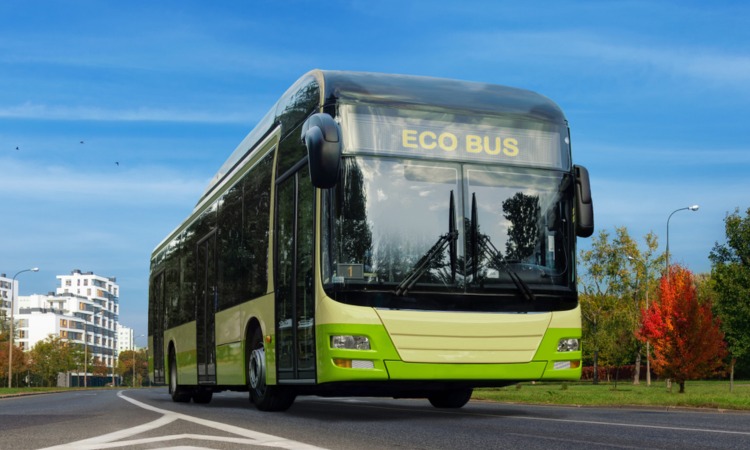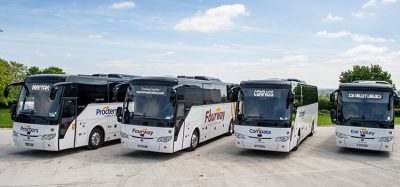U.S. transportation sector to reach net zero by 2050 with new landmark strategy
- Like
- Digg
- Del
- Tumblr
- VKontakte
- Buffer
- Love This
- Odnoklassniki
- Meneame
- Blogger
- Amazon
- Yahoo Mail
- Gmail
- AOL
- Newsvine
- HackerNews
- Evernote
- MySpace
- Mail.ru
- Viadeo
- Line
- Comments
- Yummly
- SMS
- Viber
- Telegram
- Subscribe
- Skype
- Facebook Messenger
- Kakao
- LiveJournal
- Yammer
- Edgar
- Fintel
- Mix
- Instapaper
- Copy Link
Posted: 12 January 2023 | Intelligent Transport | No comments yet
The U.S. National Blueprint for Transportation Decarbonization is a first-of-its-kind strategy which aims to provide equitable, affordable and accessible mobility options by decarbonising the country’s transportation sector by 2050.


The U.S. Department of Transportation (USDOT) has announced the release of the U.S. National Blueprint for Transportation Decarbonization. Developed by the Departments of Energy (DOE), Transportation, Housing and Urban Development (HUD), and the Environmental Protection Agency (EPA), the Blueprint is a landmark strategy for cutting all greenhouse emissions from the transportation sector by 2050.
The Blueprint exemplifies the government’s approach to addressing the climate crisis and meeting President Biden’s goals of securing a 100 per cent clean electrical grid by 2035 and reaching net zero carbon emissions by 2050.
The Blueprint is the first milestone deliverable of the historic memorandum of understanding (MOU) that had been signed by the agencies in September 2022. In addition, it will be followed by more detailed decarbonisation action plans, to be developed and implemented by these agencies in co-operation with governments of state, local, and tribal level, philanthropic organisations, the private sector and global partners.
“The domestic transportation sector presents an enormous opportunity to drastically reduce emissions that accelerate climate change and reduce harmful pollution,” said U.S. Secretary of Energy Jennifer M. Granholm. “DOE is prepared to implement this Blueprint alongside our partners within the Biden-Harris Administration to ensure all Americans feel the benefits of the clean transportation transition – good paying manufacturing jobs, better air quality and lower transportation costs.”
FTA announces $20 million funding to help improve transit in economically distressed areas
“Transportation policy is inseparable from housing and energy policy, and transportation accounts for a major share of U.S. greenhouse gas emissions, so we must work together in an integrated way to confront the climate crisis,” said U.S. Secretary of Transportation Pete Buttigieg. “Every decision about transportation is also an opportunity to build a cleaner, healthier, more prosperous future. When our air is cleaner; when more people can get good-paying jobs; when everyone stays connected to the resources they need and the people they love, we are all better off.”
In total, the transportation sector accounts for a third of all domestic greenhouse gas emissions, negatively affecting the health and wellbeing of millions of Americans, particularly those in disadvantaged communities. Furthermore, transportation costs are the second largest annual household expense in the country, which can be a financial burden for the poorest Americans.
Thus, USDOT believes that a well planned transition to a decarbonised transportation system can address these and other inequities to provide equitable, affordable and accessible options for moving people and goods. Further developing and deploying clean energy technologies, such as electric vehicles and hydrogen, while also building out the supporting infrastructure for clean transportation, will create good paying jobs in all segments of the transportation sector, while strengthening America’s energy independence.
The Blueprint is a critical step in the ongoing partnership between DOE, USDOT, EPA, HUD and stakeholders and will be followed by more detailed sector specific action plans to create a comprehensive suite of strategies to realise an improved and sustainable transportation future.
If you liked this, you may also be interested in:
▶ Madrid becomes first major European city with 100 per cent clean bus fleet
▶ Kinetic’s Go Bus launches 16 new electric buses in Canterbury, New Zealand
Related topics
Air Quality, Alternative Power, Public Transport, Sustainable Urban Transport
Related modes
Bus & Coach
Related countries
United States
Related organisations
The U.S. Department of Energy (DOE), U.S. Department of Transportation (USDOT)
Related people
Jennifer M. Granholm, Pete Buttigieg







